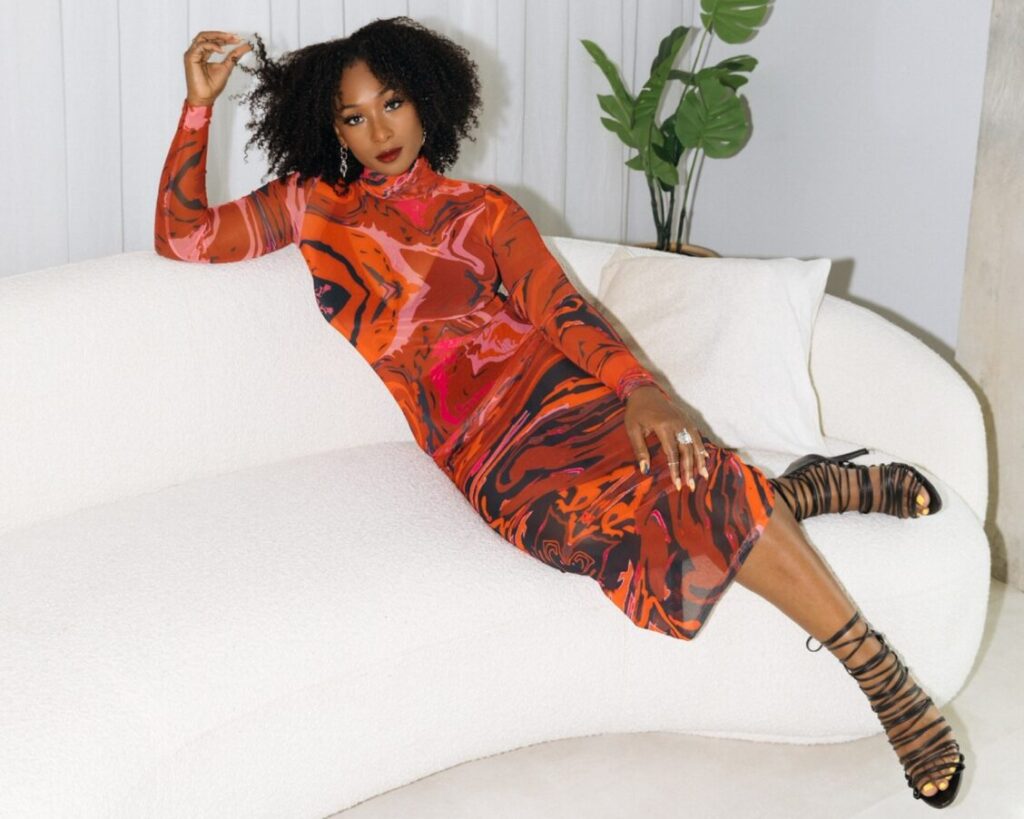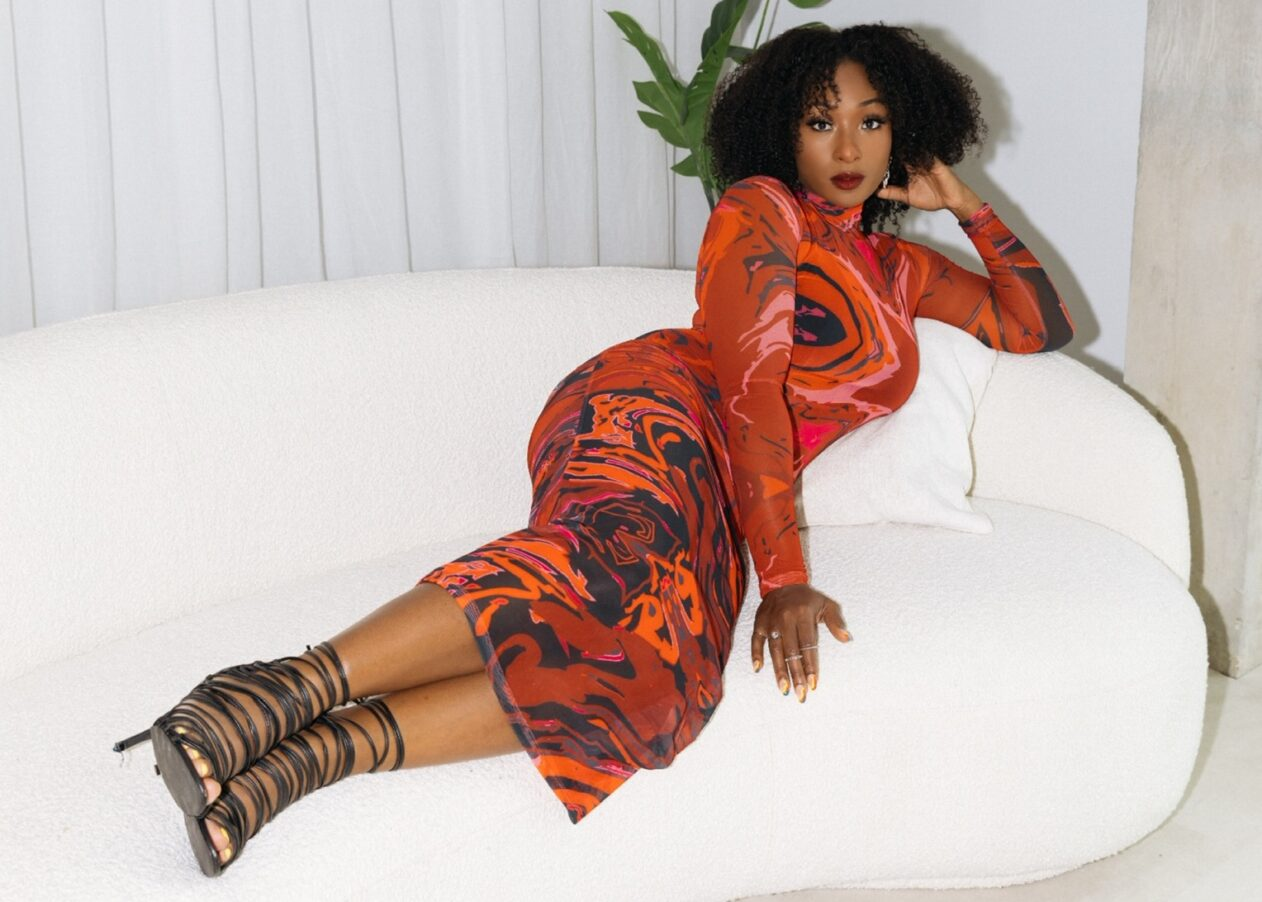‘Dopamine Dressing’ explains how our clothes can make us feel positive. It was born out of one of the core principles which explains our motivations behind why we dress a certain way and why we buy certain clothing to satisfy our emotional needs.
People really do use clothing as a tool to help them alleviate certain negative emotions, to improve their wellbeing. When you wear an outfit that makes you feel happy, you get a rush and that rush is linked to the chemical dopamine, which is released in the pre-frontal cortex.

Set: House of CB Photo: JKG Photography
Colour Psychology and Dopamine Dressing
When our bodies realise dopamine, we feel pleasure which makes us more likely to carry out the behaviour that caused this again (and again). This works when we wear any clothes old or new as long as it has symbolic value to us. Researcher Karen Pine found that items symbolic to the wearer left them feeling much more confident.
The theory of ‘enclothed cognition’ teaches us that the attributes we associate with specific items of clothing are extremely powerful. When we wear these clothes, the associations have the power to alter the way we feel and even impact the way we act. So, for example, if you associate a yellow dress with joy, then you will embody that feeling of joy when you put it on.
Researchers found that people wearing black clothing have a larger influence on a group as they come across as more authoritative. If your end goal is to feel confident when wearing black, then feelings of happiness will surely follow. However, it is important to stress that it is all about your personal associations and symbolic value.

Dress: Kai Collective Photo: JKG Photography
The pandemic and Dopamine Dressing
The pandemic has caused a shift in the way we relate to our clothing, so it’s less about “how does this look” and more about “how does this make me feel”, both psychologically and physically. You might find yourself asking: how can I function in this? Or, how does this signal something specific about me?
In terms of trends when it comes to clothing we are seeing two groups emerging. The kind of people who are going bold vs those who are champions of comfort. The bold dressers are utilising outlandish creative styles as a means of escapism to free themselves of loungewear pieces (that can feel like a uniform). Afterpay’s Global Fashion and Beauty Trend Report found that Millennials purchased 47.8% more vibrant colors and patterns in 2021 than in 2020.
However, comfort has remained an important fixture in our wardrobe and that’s something alot will find hard to relinquish anytime soon, for example, elevated basics are taking centre stage. Therefore, many of us will lie somewhere in the middle of these two groups – wearing clothes that make us feel comfortable, that we can navigate our day in but that can also say something about ourselves and our creativity.

Set: Rouhi Photo: JKG Photography
Sustainability and Dopamine Dressing
Fast fashion and social media mirror each other in how they provide dopamine hits and instant gratification. More sustainable fashion practices like slow fashion, or buying less, almost runs in opposition with everything that social media really is, which is quick, fast, shiny and new.
Although, Afterpay found that Millennials and Gen Z actually purchased more of their items from Enterprise level retailers in 2021 than in 2020 suggesting that big fast fashion companies are progressing off the cards.
Gen Z have become extra creative in order to remain sustainable whilst fuelling their desire for fresh outfits they are constantly exposed to on the gram. It’s all about making more for less: following TikTok trends to craft and customise their own clothes, hitting the charity shops or earning some cash by selling pieces they no longer love.
Therefore, it is evident getting dressed in the morning is much more important than you may first think, it can be used as means to elevate positive emotions and bring us joy!



